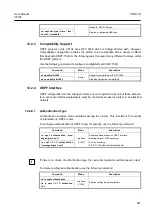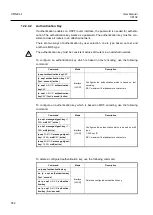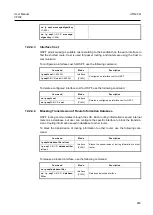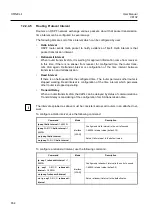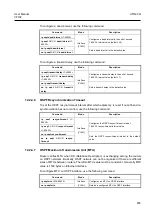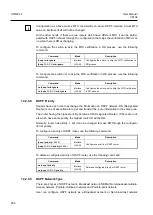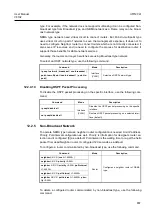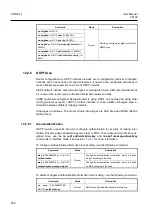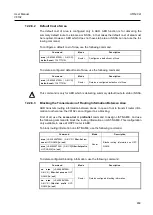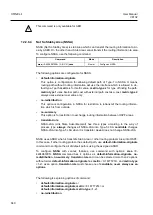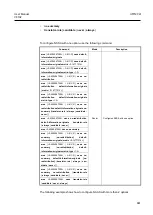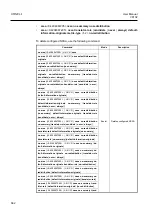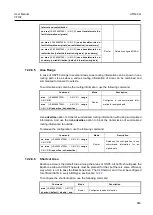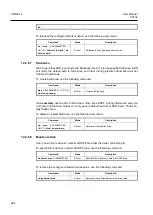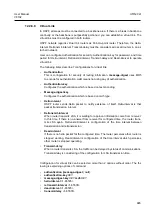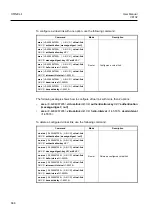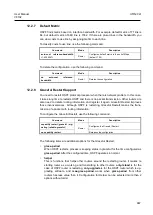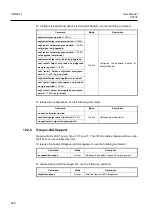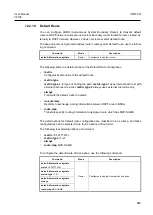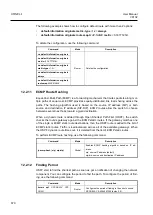
UMN:CLI
User Manual
V8102
656
Configuration as above makes MTU consistently on same OSPF network; actual MTU
value on interface itself will not be changed.
On the other hands, if there are two routers which have different MTU, it can be partici-
pated with OSPF network through the configuration that skips the verification of MTU val-
ue when there is DD exchanging.
To configure the switch to skip the MTU verification in DD process, use the following
command.
Command
Mode
Description
ip ospf mtu-ignore
Interface
[VLAN]
Configures the switch to skip the MTU verification in
DD process.
ip ospf
A.B.C.D
mtu-ignore
To configure the switch not to skip the MTU verification in DD process, use the following
command.
Command
Mode
Description
no ip ospf mtu-ignore
Interface
[VLAN]
Configures the switch not to skip the MTU verification
in DD process.
no ip ospf
A.B.C.D
mtu-ignore
12.2.4.8
OSPF Priority
Routers have each role to exchange the information on OSPF network. DR (Designated
Router) is one of essential role to get and transmit the route information in the same area.
The router having the highest priority becomes DR (Designated Router). If there are rout-
ers which have same priority, the highest router ID will be DR.
Normally, router has priority 1, but it can be changed to make DR through the configura-
tion of priority.
To configure a priority of OSPF router, use the following command.
Command
Mode
Description
ip ospf priority
<0-255>
Interface
[VLAN]
Configures a priority of OSPF router.
ip ospf A.B.C.D
priority
<0-255>
To delete a configured priority of OSPF router, use the following command.
Command
Mode
Description
no ip ospf priority
Interface
[VLAN]
Deletes a configured priority of OSPF router.
no ip ospf A.B.C.D
priority
12.2.4.9
OSPF Network Type
There are 4 types of OSPF network. Broadcast network, NBMA (Non-broadcast-multiple-
access) network, Point-to-multipoint network and Point-to-point network.
User can configure OSPF network as a Broadcast network or Non-broadcast network
i










